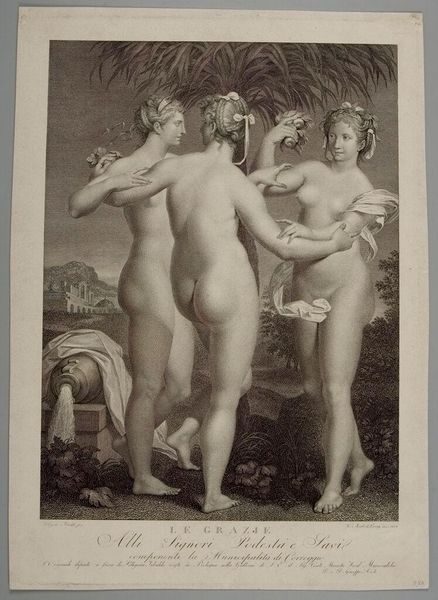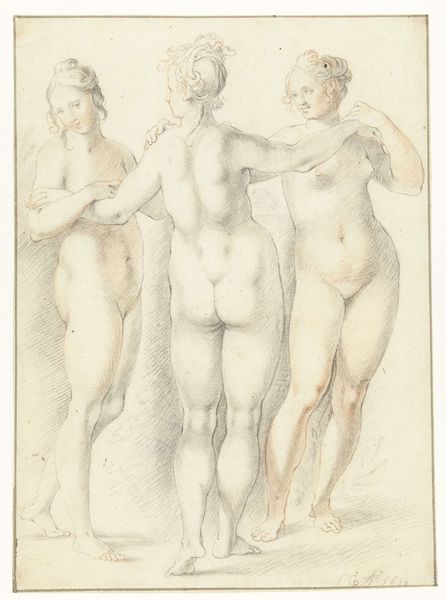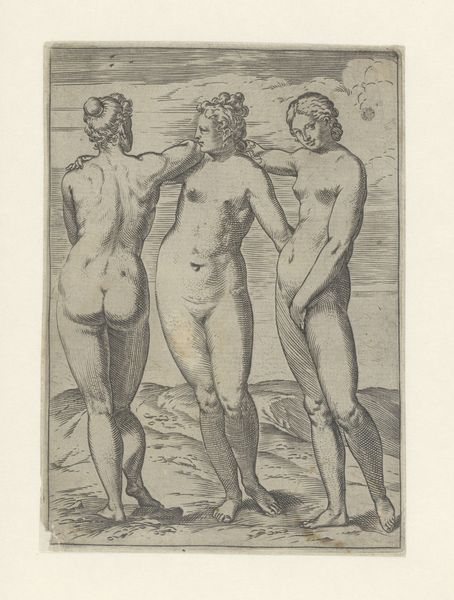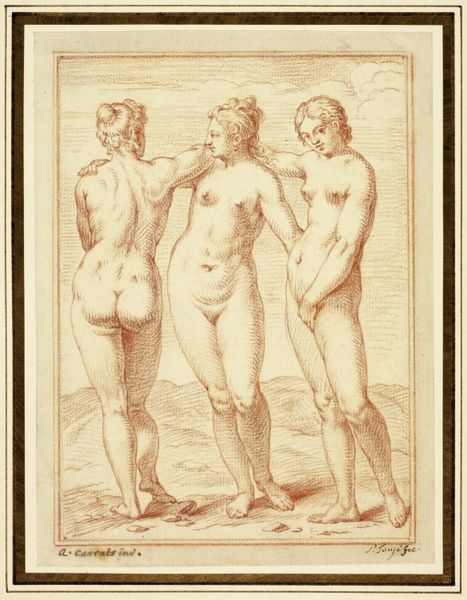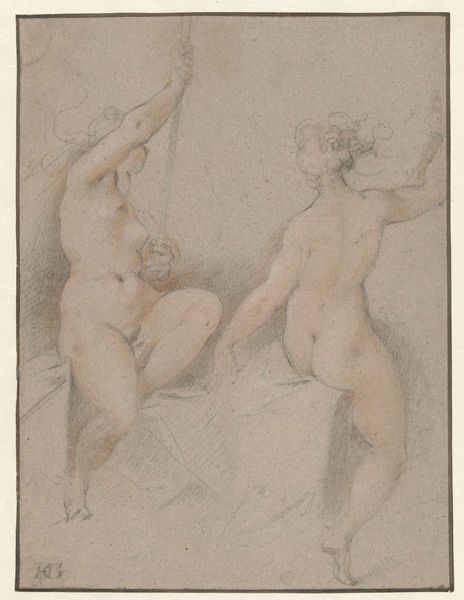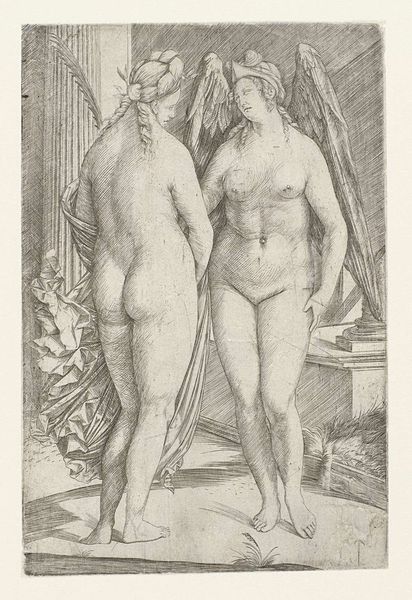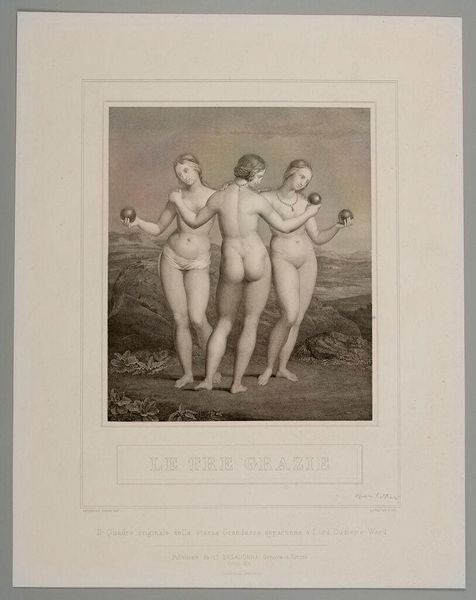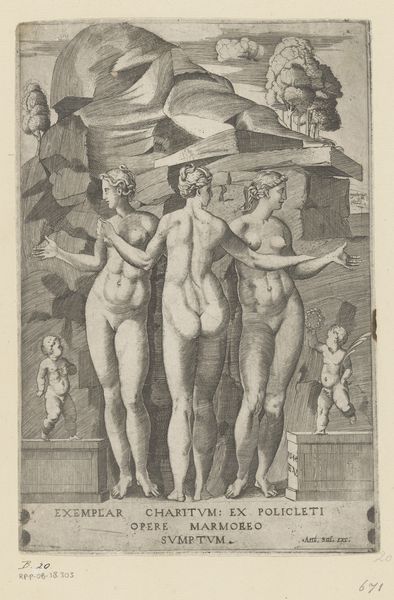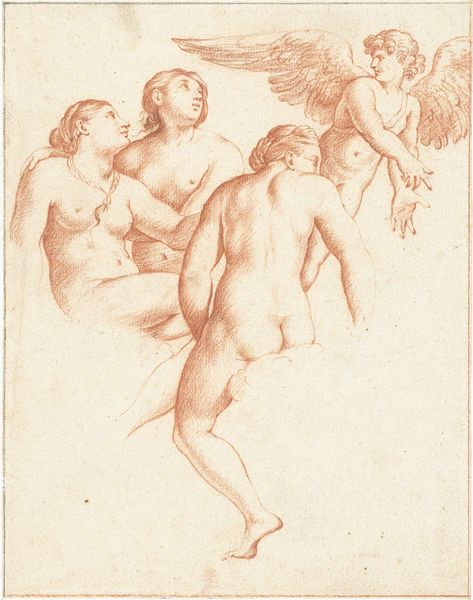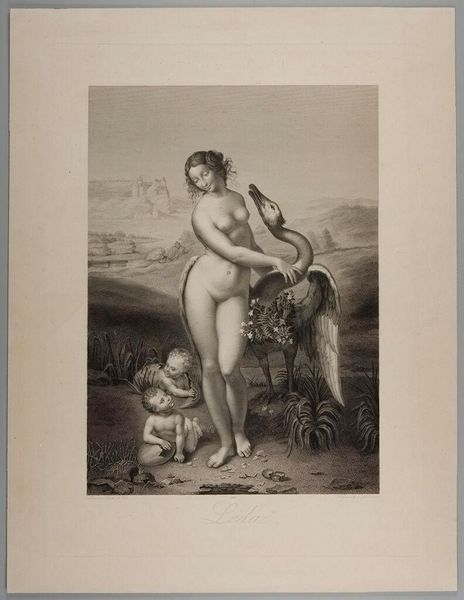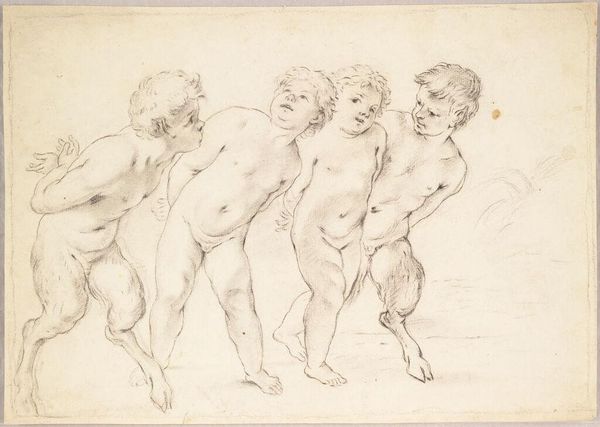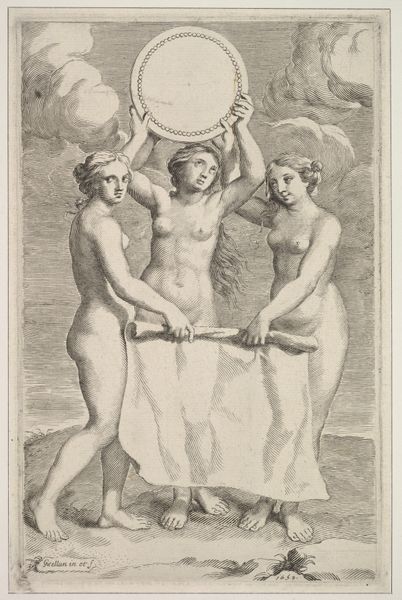
Dimensions: height 437 mm, width 318 mm
Copyright: Rijks Museum: Open Domain
Curator: I'm drawn to the gentleness here. This watercolour illustration, “Drie Gratiën,” or "The Three Graces," as rendered by Jean François Janinet between 1786 and 1787, just breathes peace. Editor: My immediate impression is pastel fragility, actually. These figures look as though they might dissolve back into the landscape if you stare at them too intently. The romantic era was one with strong imagery and even sometimes social provocation: does it capture any of that in this watercolor for you? Curator: It captures the Romantic ideal, perhaps. Remember the context. The late 18th century was saturated with allegories of virtue, but Janinet gives us something more tender than a political statement. The Graces, with their soft curves and interconnected pose, holding small bouquets of flowers – don't you feel that evokes empathy more than any manifesto could? Editor: I see your point about tenderness over a call to arms! The academic precision mixed with that watercolor softness almost obscures the social messaging with the artistic achievement itself: it reminds me of those art world tensions between state patronage and progressive expression. This piece sits firmly within academic art styles—it will probably become one that inspires and is heavily copied or it may soon after the enlightenment serve as the “opposite example” of art from academic taste. Curator: Absolutely. But those tensions, for me, only enrich the image. It acknowledges that, in the dance of art, ideals and realities are intertwined, just as the Graces themselves are. What do you find most thought-provoking here? Editor: The piece sits firmly within academic art styles—it will probably become one that inspires and is heavily copied or it may soon after the enlightenment serve as the “opposite example” of art from academic taste. Janinet gives an open historical statement, both in the beauty he shows and that social change in the art is near! Curator: Ah, I think your perspective is more critical than I imagined at first. Thank you for allowing me to understand more of where it comes from. It gives another layer for the Rijksmuseum’s public to relate to it from as well.
Comments
No comments
Be the first to comment and join the conversation on the ultimate creative platform.
